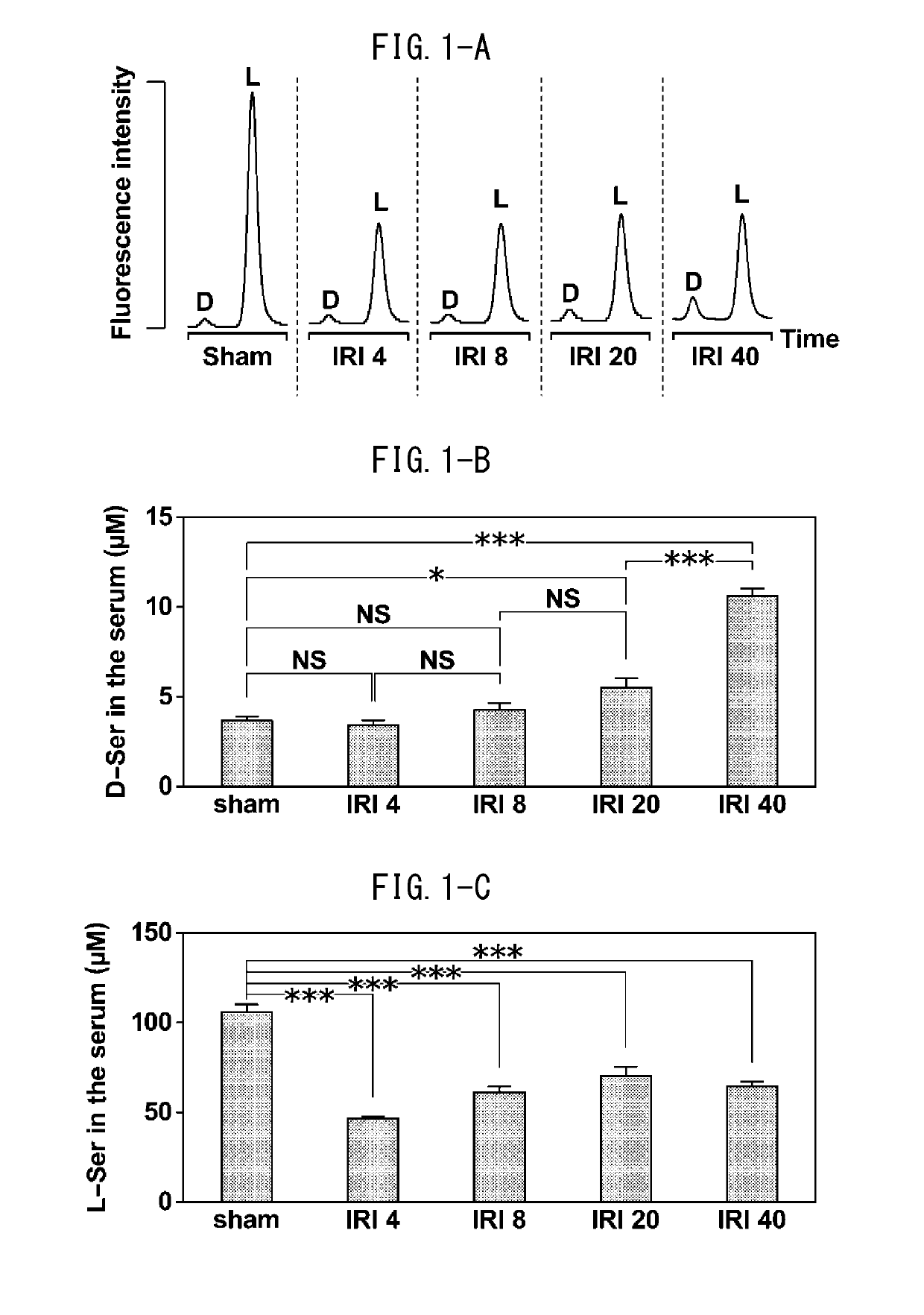Marker for early diagnosis of kidney failure
a kidney failure and early diagnosis technology, applied in the field of early diagnosis of kidney failure, can solve the problems of no biomarker that is satisfactory in terms of accuracy, affecting the health of japanese citizens, and placing a considerable burden on patients in terms of health care costs
- Summary
- Abstract
- Description
- Claims
- Application Information
AI Technical Summary
Benefits of technology
Problems solved by technology
Method used
Image
Examples
example 1
[0107]1. Materials and Methods
[0108](1) Research Ethics
[0109]All experiments were performed in accordance with facility guidelines and were approved by the animal experimentation ethics committee of the facility.
[0110](2) Materials
[0111]Amino acid enantiomers and HPLC-grade acetonitrile were purchased from Nacalai Tesque, Inc., Kyoto, Japan. HPLC-grade methanol, trifluoroacetic acid and boric acid were purchased from Wako Pure Chemical Industries, Ltd., Osaka, Japan. Water was purified using the Milli-Q Gradient A10 System.
[0112](3) Animals
[0113]Animals were housed in an SPF environment under a light / dark cycle of 12 hours each while allowing unrestricted access to water and feed. C57BL / 6J mice were purchased from CLEA Japan, Inc., Tokyo, Japan. Mice having a point mutation of D-amino acid oxidase used in the examples were the result of a mutation in which glycine at position 181 was replaced with arginine and obtained by backcrossing strain ddY mice to strain C57BL / 6J mice (Sasabe,...
PUM
| Property | Measurement | Unit |
|---|---|---|
| pH | aaaaa | aaaaa |
| internal diameter | aaaaa | aaaaa |
| wavelength | aaaaa | aaaaa |
Abstract
Description
Claims
Application Information
 Login to View More
Login to View More - R&D
- Intellectual Property
- Life Sciences
- Materials
- Tech Scout
- Unparalleled Data Quality
- Higher Quality Content
- 60% Fewer Hallucinations
Browse by: Latest US Patents, China's latest patents, Technical Efficacy Thesaurus, Application Domain, Technology Topic, Popular Technical Reports.
© 2025 PatSnap. All rights reserved.Legal|Privacy policy|Modern Slavery Act Transparency Statement|Sitemap|About US| Contact US: help@patsnap.com



